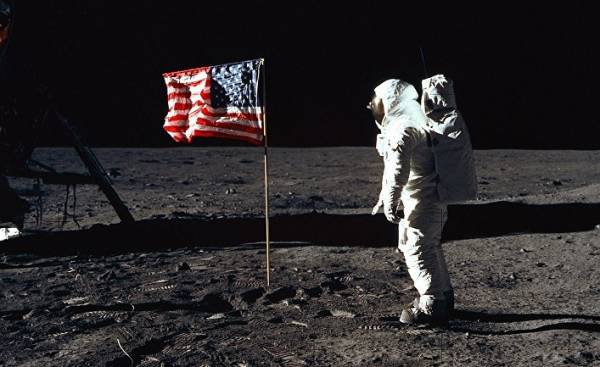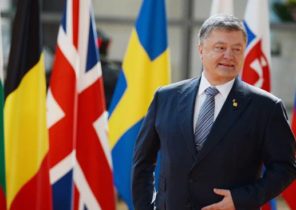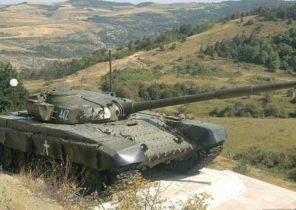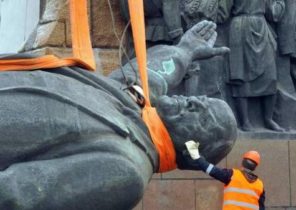
The second part
The Americans have walked on the moon, but the Soviet Union did not give up. The Union wanted to catch up with the United States. However, Soviet specialists were under immense political pressure, so there was a terrible accident. The Americans knew about them through espionage. They were one of the few who knew what was happening, in fact Russia is carefully concealed their failures.
When did the rivalry between the United States and the Soviet Union for the conquest of the moon, the CIA lacked vital intelligence information from the Soviet Union. However, the first attempts of espionage were made even before the launch of the first satellite in the world “Sputnik” (more about this in the first part of the publication). This confirms secret Memorandum, dated the end of 1963. In it, the CIA admits that “still not able to determine the place where an Intercontinental missile”, with the exception of Baikonur. But for the first time, the Soviet Union placed the media back in 1960.
Lenin
In 1965, CIA analysts, based on images from space spies, first estimated the number of Soviet Intercontinental missiles aimed at the West and in China: there were 224.
“We assume that the Soviet Union is developing a new big rocket, which power is comparable to that of “Saturn-5”, — reported the CIA in January 1965 in the White house. — Flight testing can begin late next year. There is almost complete confidence that in the future, the Union wants to send a man to the moon, but we have no evidence that this project focused on missions in 1968 — 1969 as our project “Apollo”.” In Moscow it was rumored that the missile will be named “Lenin”.
The first launch pad (Langley called her J-1) at Baikonur completed in the summer of 1964. The second J-2 — in the spring of 1965. Complex J cost in terms of dollars 300 — 360 million, or 75% of costs spent at the “39” in Florida for “Saturn-5”. It was built in close proximity to housing for employees of the new complex.
However, us intelligence still was not sure that the Russians want to use superrace for the lunar program. In the report dated October 1965, States: “Landing people on the moon and the creation of a large orbital station is possible in equal degree.”
Improvement of reconnaissance satellites took a long time. Only in early 70-ies of the Americans managed to create such a constellation of satellites, which provide continuous monitoring 24 hours a day all that is happening in important parts of the world. In this regard, was restricted to the flights of reconnaissance aircraft. However, when special services were immediately required some information from a specific place, the aircraft had the advantage. After all, the first satellite images were received on the long path to the analytical Department, which took up to several days. Only in 80-e years scientists have developed a snapshot of the broadcast data from the satellite.
First, data from reconnaissance aircraft and satellites were studied by the experts in the CIA, but on the sixth September 1961 it was in the recently opened top-secret Office of national reconnaissance (National Reconnaissance Office). In the first phase, the satellite images it was possible to recognize objects with a size of several meters, and today they are visible even objects the size of a few centimeters and less. For some special operations use satellites equipped with television cameras, and then the military and policy at the Washington center can watch the events live. Other satellites with infrared detectors provide a thermal map of the territory. Now it can be displayed accurate to one tenth of a degree Celsius.
A completely new category of reconnaissance of space objects was a series of Ferret. These satellites were intercepting all telephone and radio communications over a large area. Even before the Americans began to launch these satellites, they built a huge listening systems in the Federal Republic of Germany, Turkey, Japan, and probably in other parts of the world. Thanks to this equipment, the United States engaged in the monitoring of all electromagnetic waves. So the team intercepted the dispatches and negotiations of all kinds, which are then transcribed and analyzed. Such activity is called electronic intelligence (Electronic Intelligence, ELINT).
Today the United States launch satellites, which combine optical and electronic intelligence. Few, even among the invisible: untrained observer becomes a companion for a long time and only after many months can detect in a completely different place.
On the basis of the radio signals of the satellites, even students in secondary school in the British city of Kettering has determined the location of the new Soviet space base. Under the guidance of an experienced specialist Jeffrey Perry, they discovered the launch site near the town of Plesetsk near Arkhangelsk on the North-East of the European part of Russia. In 1966, the students recorded the launches of satellites. The Americans later confirmed these data.
Ground tracking stations of NASA and the system of aerospace defense of the American continent NORAD can maintain visual observation of all satellites, separated stages of rockets and their fragments. Today is possible to obtain how perfect the pictures that they show objects the size of a ball ping-pong table flying at an altitude of up to 500 kilometers, and may be smaller. Based on these images you can calculate the mass and size of objects and, of course, to understand their purpose.
Aerospace espionage allowed the Americans to monitor all activities on the Soviet launch sites, military bases and rocket test centers, which was conducted under the open sky, and for all objects launched into space. Intercepted talks completed the picture.
Details about this technique the Americans, of course, withheld, and released very late only then, when there are already more high-quality equipment. The US often hide it. The existence of the Department of national intelligence, the government said in 1992, that is, 31 years after its opening. Until then, even the nosy American journalists could only guess who was responsible for reconnaissance satellites.
Based on all these sources, analysts make up the big picture that gets senior management. To the public are selected only some fragments, often highlights that in the West, as a rule, are not silenced, and they give voice to selected journalists and officials. Sometimes the information is corrected in accordance with the needs of the intelligence services or the interests of different government organizations. However, it turns out, if it appears at all, only after a long time. Sometimes in order to create an alibi talking about the “leak”. Received the CIA information on the Soviet lunar program in the 60-ies published in the British journal Spaceflight after the declassification of the archives in the summer of 1993.
Mosaic intelligence was supplemented with monitoring of all Soviet and East European mass media: print, radio and television. On this in the research division of the Library of Congress worked for more than two hundred highly qualified professionals. Such specialized units were all the intelligence services. Presumably, 90%, and possibly more, all intelligence comes from open sources.
Flight to the moon in the next five years
“Flight to the moon will be preceded by its fly — predicted cosmonaut Gherman Titov in the Preface of the book “Moon man”, which was released in 1966. — Modern astronauts have a great opportunity to consider the moon around.”
In the spring of 1966, in an interview with French publication Paris Match cosmonaut Vladimir Komarov did not want to compare the American and Soviet efforts to landing humans on the moon. However, Mosquitoes admitted that, according to him, “our program is in no way inferior to us”. Nevertheless, before landing on the moon should be landing automatic station with experimental dogs and rabbits, and then return to Earth. Such a task, the Americans did not think about that.
“After the establishment of regular posts, and it will take about two years, we will begin a thorough study of the lunar surface and deep layers, — said Komarov. — Each successive expedition will start camping outside the station by different routes. Members of the expeditions will be geologists, astronomers, biologists… And a few years on the moon would be the same as now in polar regions. We will send as many scientists as you see fit to perform routine tasks.”
Professor Konstantin Feoktistov, a scientist-astronaut who eventually became the chief architect of all manned space vehicles and orbital stations, was also optimistic. When in March of 1966 I spoke with him in Moscow, he stated: “the Landing on the moon — it is generally agreed. It’s a matter of time for further work and, of course, financial means.”
First flight of the powerful Soviet missiles, which could deliver people to the moon, probably has been publicly mentioned on the ninth of November 1966 in the conversation of specialists and astronauts with the MSU students.
Academician Sedov then listed six main objectives of the Soviet space program for the next 10 — 15 years: flight to the moon, near-earth orbital station with 24 — 36 specialists, transportation of materials and Assembly in orbit, unmanned spacecraft for a soft landing on Mars, a permanent laboratory on the moon’s surface for 12 — 16 scientists and a long flight of 12 to 16 astronauts.
After a review of this very ambitious program was followed by a question. To the question, are there any plans to fly around the moon, said cosmonaut Pavel Popovich: “Maybe it won’t, and we’ll sit down.” However, another student asked, will celebrate whether landing on the moon, the USSR 50-th anniversary of the great October revolution, that is, will there be a flight no later than November of 1967, and Popovich replied: “I can not say”.
“Whether the Soviet Union, the rocket as “Saturn 5″?” Popovich without hesitation replied: “Yes, and there are even stronger”.
The conversation was organized for Soviet students, and the world learned about it only because the son of the correspondent of the Czech news Agency ČTK, the spouses of Faith and jindřich Sukovich, studied at MSU, and to meet with the astronauts brought him friends.
“I can’t name the date of the first flight of manned spacecraft to the moon, because more needs to be done, — said the head of the Soviet cosmonaut, General Nikolai Kamanin 10 Mar 1967 in an interview with the Polish PAP Agency. — One thing is clear: after five years, these flights will be frequent, and rockets will go to the moon’s already set for the track. While not solved two major problems. The first takeoff from the moon, but to me this problem seems not so great. The second is the return to Earth at second space speed and with great accuracy, to ship not flying the Earth and became a satellite of the Sun, or that he is not burned in the dense layers of the atmosphere. To solve these problems now we’ve tested. Only after successful completion it will be possible to talk about sending people to the moon.”
All of the performances of scientists, astronauts, politicians and journalists of the countries of the Soviet bloc and Communist China has followed closely the staff of analytical division of the Library of Congress. With the help of the CIA on the basis of their data, compiled reports for American politicians. So it was in the event space: each year the division has published a thick volume with all data and reports.
Supermaket — the Great mother
A new Chapter of manned space flight, NASA George Mueller also did not lose optimism: “we still have a chance to land on the moon before the end of 1969, he stated at the international Congress of astronauts in September 1967 in Belgrade. — Funding for this project did not particularly suffered from budget cuts, which went to the Congress.”
Mueller probably based his statement on the CIA report from the second of March 1967, which affirmed that the USSR is developing a powerful missile. Intelligence intelligence service clearly saw her in the pictures of the landscape at the end of February. Looks like this will be more rocket “Saturn-5”. The scouts officially called it “carrier J”, but between themselves they called her the great mother.
The report stated: “the Soviet manned lunar program, probably, was not conceived as a competition of the program “Apollo”, that is not designed for a peak in 1968 — 1969…” But further stated: “Based on all the data we have to assume that the USSR might try to drop people not the moon no earlier than in the middle or at the end of 1969… But most likely it will happen in the 1970 — 1971”.
However, some signs testified to the fact that the Soviet Union will not be able to compete with the United States, wrote the experts of the CIA. “There are signs that the take-off equipment is likely to be ready for testing until mid-1968. In order for the missile can be operated and used to send people who need a series of tests that must be completed in less than a year before you can start testing with landing on the moon. While Soviet specialists have to try a new craft, try a return from lunar orbit and likely to develop the technique of landing on water… it isn’t excluded that they will also need equipment dock ships in orbit and associated equipment”.
The analysis of the intelligence service from the first of November 1967 affirmed: “Today we expect that the USSR will attempt to send man to the moon in the second half of 1971 or in 1972. Second term most likely.” The USSR faced a number of difficulties and accidents.
Great attention of the experts was caused by the information obtained by the CIA, that in the USSR there are two separate project of a manned flight to the moon. First, probably in the first half of 1968, will attempt a flight around the moon using already established techniques. This will use a rocket SL-9 (“proton”) with the last stage of the rocket SL-8 and modified by the ship “Voskhod”. “This combination will bring the load weight of 15 thousand pounds (almost seven tons) to lunar orbit, will give the Soviet specialists the opportunity to send a crew of two. The second option is that the USSR can use a newly developed upper stage SL-9 and the new ship, capable of adjusting trajectory”. First flight of Proton with a new third stage can be expected in the first half of 1967. Six months or a year this rocket can first deliver into orbit the astronauts.
The USSR still solves the problems associated with sending unmanned stations on the moon, as reported by the CIA. In total, the Soviet experts managed to carry out six successful launches. One was only partially successful, and 19 ended with accidents.
In addition, the scouts argued that perhaps the USSR is preparing two projects of orbital stations.
Intelligence analysts agreed on the fact that the Soviet space program focused primarily on the successes that will impact on public opinion. However, the impression that the Soviet leadership allocates for these projects less money than NASA gets. “We assume that the costs of the Soviet space program is increased annually by an amount which is equivalent to one billion dollars since 1962, when it was spent one billion dollars, until 1966, when spending reached six billion. A large number of these growing sums spent on the construction of large complexes in Turtle, and other related design programs in area J. Area J is still not completed… But we are confident that the program has already advanced so far that allows to reduce total costs, and in the next few years they will be stored at 5.5 billion us dollars…” This sum presumably included the expenditures on the civil and military aerospace.
Soviet cosmonauts will fly to the moon!
In late September 1967, American spy satellites photographed at the Baikonur rocket R-7 with an additional stage, which is likely to be ready for flight around the moon. But on September 28 the military equipment and tow the rocket back to its Assembly building. The same thing happened on October 26. Apparently, the rocket again and again tested and repaired. Finally, on 22 November, the rocket exploded on the pad.
“Saturn 5” left the Earth on the ninth of November 1967, but with one year delay. He orbited at a height of 185 km of the ship “Apollo-4”, the weight of which together with the last stage was of 115.5 tonnes. It was the heaviest load ever to be displayed in the space. The missile was launched from a new base Merritt island at Kennedy Space center in Florida from launch pad built for the lunar missions.
“Some Western observers are now convinced that the Russians landed on the moon before it could make America through the project “Apollo”, wrote the British expert on space Kenneth Gatland in the journal New Scientist of March 21, 1968. — Evidence of Soviet capabilities in manned missions were added in 1966 after the Hungarian Congress of the International Astronautical Federation, where there were rumors about the rocket larger than the American “Saturn-5”. First, it does not attach any importance, but soon James Webb, the head of NASA, informed the Committee Astronautical Congress in Washington that a new Soviet rocket will have a thrust of more than 10 million pounds.
It was reliable information, obtained during the analysis of very high-quality photos that were taken from the American reconnaissance satellites over the cosmodrome of Tyuratam — Baikonur near the North-Eastern coast of the Aral sea in Kazakhstan, where for the previous four years saw active work on the preparation of the launch pad… anyway Webb believed that the new Soviet booster will have an effect “during the 1968 or soon thereafter.” The first flight test, apparently, will be unmanned, as was the progress of “Sautron-5″”.
In November 1968, American reconnaissance satellites detected the first launch of an improved rocket “proton” with four steps. Western experts, who called the rocket Proton-U, calculated that it can bring to the orbit of the moon or planets five to six tons of load.
In the spring the Americans were going to send the “Apollo 8” flyby of the moon. At the international conference on space research, held in the summer of 1968 in Vienna, it was reported that the USSR was preparing to send astronauts to fly around the moon. “They can beat us!” In Washington wondered whether to trust this task to the “Apollo 8”, which was supposed to go into space just before Christmas. NASA took the decision on 11 November 1968.
The launch window for the flight to the moon from Baikonur opened for a few days before from the cosmodrome in Florida. Certain trajectories near the Earth and on the moon and to the planets you can’t fly in any day — there are certain periods when the spaceport and the target have the most favorable relative positions.
“Perhaps the Russians will not have time, and then we will achieve success,” consoled herself with the Americans. However, on 26 November in Moscow has information that cosmonaut Pavel Belyaev, who was considered the commander of the first crew in the possible flight around the moon, went to the spaceport.
In early winter, American intelligence satellites monitored the Baikonur, where people were preparing Proton-U flight. The Kremlin demanded: “We must be first!” Look at the moon “ZOND-7” of the eighth of December 1968 had to go Alexei Leonov and Oleg Makarov.
A series of inspections of equipment left questions. There was no certainty that a rocket will work properly. So it was sent back from the launch pad in the mounting case.
On 20 January 1969, wanted to launch an unmanned “ZOND-7”, “proton” exploded. The lander managed to save from the burning wreckage thanks to the emergency rescue system, which has not given failure. Whether in the office people, they would have survived.
The crew of “Apollo 8” celebrated a quiet Christmas in close proximity to our satellite. “The moon is totally grey, passed James Lovell. — Color no. It resembles plaster or grayish sand. We see many of the details. A sea of Plenty is not as noticeable as when viewed from Earth. The rounded craters. It seems like they (especially round) was formed after a collision with a meteorite or other object.”
Superrocket for the first time on the launch pad
The backlog of the Soviet program from the U.S. all increased. Two launch pads and their command posts, Assembly-test facility, other ground services, and even housing for employees — all this was built at Baikonur in the spring of 1965 until the beginning of 1968. All this ground has cost a billion rubles. Engineering test of a missile, over which the work was performed, as established by the American spy satellites, was conducted in mid-summer 1966.
“The construction of the Assembly and testing of the database was delayed for two years, said chief designer Vasiliy Mishin. Although it was not complete. The Americans at home could experience the whole motor block, and then, without breaking it, install on the rocket ready to launch. We carried out tests on the parts and could not even dream to experience all 30 engines of the first stage together.”
Baikonur has not built the technical position for testing of the first stage, therefore, did not remain anything else how to test N-1 entirely in the course of the flight — just as it had to do with the Queen all the previous hosts.
CIA analysts based on satellite imagery, calculated that the height of the N-1 reaches 102 meters. They are slightly wrong, which confirms the quality of system analysis. Diameter three-stage rocket at the base was equal to 17 meters, its height was equal to 105 meters, and the total weight was 2735 tons.
The rocket could fly even if rejected two pairs of propulsion of the first stage, one pair of second and one third-stage engine. As the oxidant used liquid oxygen as fuel — kerosene. This combination was cheap and not toxic.
Low orbit supermaket could bring a maximum of 98 tons burden. On translunary orbit it was supposed to deliver the fourth stage with one engine NK-19.
The payload, which occupied about one third of the height of the missiles were hidden under aerodynamic fairing had a diameter of six metres and weighing 23 tonnes.
Layout superacute mounted almost entirely in the new building of the Baikonur cosmodrome in the fall of 1967. From 25 November to 12 December at the launch site number one were tested: tested electrical equipment media and platform. Staff were trained in the maintenance of the missiles.
The flight option of the carrier, the third product under the designation 3L, collected in the housing at the end of April and installed it on the starting position of the seventh of may 1968. The first two stages and half of the third was painted in a rich gray color, the second half of the third stage were white, as well as the aerodynamic fairing. Monster height more than hundred meters stood between two stable farms with a height of 180 meters. Finally near the rocket were mobile mounting platform height of 125 meters.
Before the third of February 1969 rocket N-1 3L have taken out of the carrier, chief designer of the “blessed” her by breaking a bottle of champagne on its Board as on Board the ship. More than 2,300 technicians and military were preparing to launch, standing in the cold, when temperatures dropped to minus 45 degrees. 28 days they worked in such conditions. It is therefore not surprising that the first launch was delayed by one day due to bad weather.
N-1 was launched on 21 February 1969 at 12:18:07 Moscow time. Success no one expected. Immediately after the start failed, the system control CORD, and on the third and seventh seconds of flight have ceased to work the 12th and the 24th engines. However, the rocket continued its flight, because this failure could not stop her. But then came the vibration. On 55-th second of the next with five engines in the upper portion of the first stage the fire started. 65 seconds the flames burned through the cables leading to the control system and telemetry equipment. 114 — 120 seconds burning rocket fell in 52 kilometers North of the launch complex.
This accident left the attention of American reconnaissance satellites. Then their was not so much to continuously monitor what is happening on the main Soviet cosmodrome. The wreckage around the starting position J to anyone about anything not talking. The detectors in remote Turkey recorded one minute only combustion engines. It did not attract attention. However, the accident became known to employees “MI-6”. In the headquarters of the CIA in Langley I couldn’t believe it. “The British told us some of the details, gone away from our attention,” said Sayre Stevens, chief analyst of the group of 15 experts in the space Department of the scientific intelligence of the CIA (Office of Scientific Intelligence)
Therefore, in the June Intelligence brief CIA ((National Intelligence Estimates) said that “there is no evidence that in the course of this program was having serious technical problems”. Only much later, after analysis of other circumstantial evidence on the basis of remote monitoring technology, American analysts have confirmed this failure. This happened after the second explosion of the great mother.
The CIA had misconceptions about the options of the landing of the Russians to the moon. Necessary information from Moscow was not. In June 1969, American analysts have assumed that the lunar operation would require the launch of two Great mothers, their docks are near the Earth or the moon. The first attempt, presumably, will be made in 1971 or rather, in 1972. “There is a possibility that during a test launch of the Soviet Union J will take a large space station”.
The explosion at Baikonur
The Americans saw supermaket on the launch pad at the photographs from spy satellites at the end of June 1969. In early July, analyst Jack Rooney were viewed under the microscope imagery reconnaissance satellite KH-4B. An experienced officer found out what was happening on Turtle. A solid routine. Since the Second world war, when the Englishwoman Constance Smith was looking at pictures of the base Premade, made a reconnaissance aircraft, combat missile V-2, methods of analysis have not changed.
Suddenly Rooney has exclaimed: “my God! There in the pictures of the last party was a missile, now a wreck!”
He called his boss, David Doyle. Experienced analyst Doyle agreed. Adjacent to the site J is a lot of wreckage, and one of the towers there is no service. Clearly an accident — the accident of the great mother!
Senior analyst Dino Brugioni sent to all stations of the intelligence service of the order: “Find out, not recorded in the early months, your detectors are unusual data from Tyuratam!”
Soon there were interesting reports. Seismographic stations in Asia and Europe recorded the third Jul small tremors in Kazakhstan, similar to those that caused the launch of “Saturn-5”. The radar reconnaissance satellites recorded radio signals of Tyuratam that showed bad start.
The sensational news quickly reached the highest levels in the hierarchy of the CIA. Director Richard Helms reported the incident to President Richard Nixon and Secretary of defense Melvin Lardo. All felt relieved. Russian supermaket exploded for the second time! “Now they ain’t beat!”
At the beginning of July in Moscow spread information that recently exploded two Soviet lunar automatic stations. Supposedly they were supposed to deliver rock samples from the moon. The Soviet Union wanted at least to get ahead of US. However, all is not lost! Because the launch window for Tyuratam open to the most convenient time for a Florida base to them. Kennedy. What if the Russians launch the station simultaneously with the “Apollo 11”?
The sixth of July, 1970, the Washington edition of the Sunday Telegraph published an article by its Moscow correspondent Anthony Myclassa “the Third of July at Baikonur, two explosions occurred”.
26 August 1970 the American intelligence stated: area J-1 destroyed. “The starting position of the J-2 can probably be used to start as soon as problems (with the rocket) will be solved. Considering that the manned lunar flight will need two starting positions, all the evidence suggests that the Soviet Union will be able to implement it only at the end of 1972 or in 1973”.
Two more explosions
Despite the fact that the Americans have walked on the moon, Soviet engineers still wanted to catch up with them, but was faced with many difficulties.
The third launch of N-1 was a bit more successful: June 26, 1971, the rocket rose from the launch pad number two. First, the rocket carrying the lunar Orbiter “Union LOCK” with the layout of the LK lunar ship. However, after eight to ten seconds at an altitude of 250 meters failed carrier-based control system. On 48 seconds the rocket began an uncontrolled spin. Destroyed connection of the third stage with the lunar complex: they broke up and exploded. Debris scattered around the site. Surprisingly, the first and the second stage is still flying, although in unmanaged mode. They fell in 16 miles, forming a crater with a diameter of 45 meters and a depth of 15 meters. The rocket debris was scattered over an area of 10 square kilometers.
The third accident powerful Soviet media was recorded by us satellites. Analysts in Langley see in the pictures is about 20 kilometers from the launch complex crater with a depth of about 15 meters and a diameter of 30 meters, and around — the wreckage.
The fourth launch took place on Thursday 23 November 1972. At 90 seconds, as planned, six engines worked, but soon one engine caught fire. The fire equipment was denied. The wreckage of the rocket fell away from the launch site and the payload landed by parachute. The exact cause of the accident could not be established.
The American system of space monitoring again failed. Satellite KH-9 number four flew over the launch complex J at the beginning of the month, and KH-9 number seven was only there for 31 December 1972, more than a month. However about the incident, the Americans found out in another way: most likely, they recorded telemetry signals. The CIA reported in a secret report on the Soviet space program in 1972, published in may of next year.
20 December 1973, the CIA reported to the White house about new delays in the implementation of the Soviet lunar program. If we could cope with superalloy, the first Russian could set foot on the moon in 1978. However, if the accident will continue, all will have to be postponed at the beginning of 80-ies.
May 22, 1974, the Kremlin made Mishina from the post of chief designer. In his place was appointed Valentin Glushko, who previously headed OKB-456, design engines and later became NPO “Energy”. A new chief designer has stopped working on H-1 and wanted to create a new family of missiles according to their own ideas. When Misha returned from the hospital, Glushko was deprived of his security clearance developments and were not allowed to venture.
Fear because of the American rocket plane
When the Americans spoke about the construction of the rocket plane (the space Shuttle), the Kremlin and the Ministry of defence was scared. Out there thought that this spacecraft will be able to become a carrier of nuclear bombs. 17 February 1976, Glushko was ordered: “You have to build a machine even better!”
Then, the design Bureau began the development of the transportation system “Energia” — “Buran”. Universal rocket “Energy” created almost the same team that worked on the H-1. “Energy” was supposed to be a carrier of laser weapons designed for “star wars” and space Shuttle “Buran”. Russian historian Anatoly Jacques wrote in April 2015 to your page RussianSpaceWeb.com that rocket plane was intended “primarily to carry nuclear munitions,” that is, designed as a nuclear bomber.
In which direction will the further development of the Soviet space program? On this issue fought American scouts in 1980. The CIA believed that the Kremlin will manage to create a rocket plane similar to the space Shuttle. This opinion was not according to analysts at the military intelligence DIA. They believed that the Soviet Union will focus on improving weapons against satellites and create a laser cannon to shoot down the spaceships of the enemy. Reconnaissance satellites passed information on the preparation superrocket the Great mother or “Energy”, but nobody could have predicted, for which they are intended. However, according to the report, dated August 1980, failed to understand before is difficult to understand the system of organization of Soviet rocket-space industry to identify individual companies and to establish their leadership.
In response to criticisms that the “Buran” will deliver the load to 40 times more expensive than traditional media, head of Glavkosmos, Alexander Dunayev said the journalist, “Literary newspaper”, “the System “Energia” — “Buran” is intended primarily to perform defence tasks, and this recognized need. All other issues, as you understand, of course, relegated to second plan.”
Part of this project was combat spacecraft “Polyus”. This cylinder with a height of 37 meters and a diameter of three meters, most likely, had to carry a space gun, and also serve as a tug to dock with the space station or other object. It was all a response to the Soviet marshals on the project of President Ronald Reagan’s “Strategic defense initiative” (Strategic Defense Iniciative), the essence of which was defense against missile attack in space. History this program was called “Star wars.” When Soviet leader Gorbachev learned that in may 1987 the rocket “Energia” is to bring the “pole” in the space, he imposed a ban. In the end, “pole” did not get into orbit and fell into the Pacific ocean.
USSR got a part of information about us space technology. This exploration was announced by President Ronald Reagan 15 November 1984. In the USSR built the rocket plane, which is similar to the Shuttle, and the information obtained from the United States, the Russian saved $ 750 million.
The end of the second part. In the final part you will read about an apology to Nikita Khrushchev and find out whether the Russian wanted to destroy the “Apollo 11”.
The text uses excerpts from the book “the Secret race for the moon”, the output of which is scheduled for may 2017.







